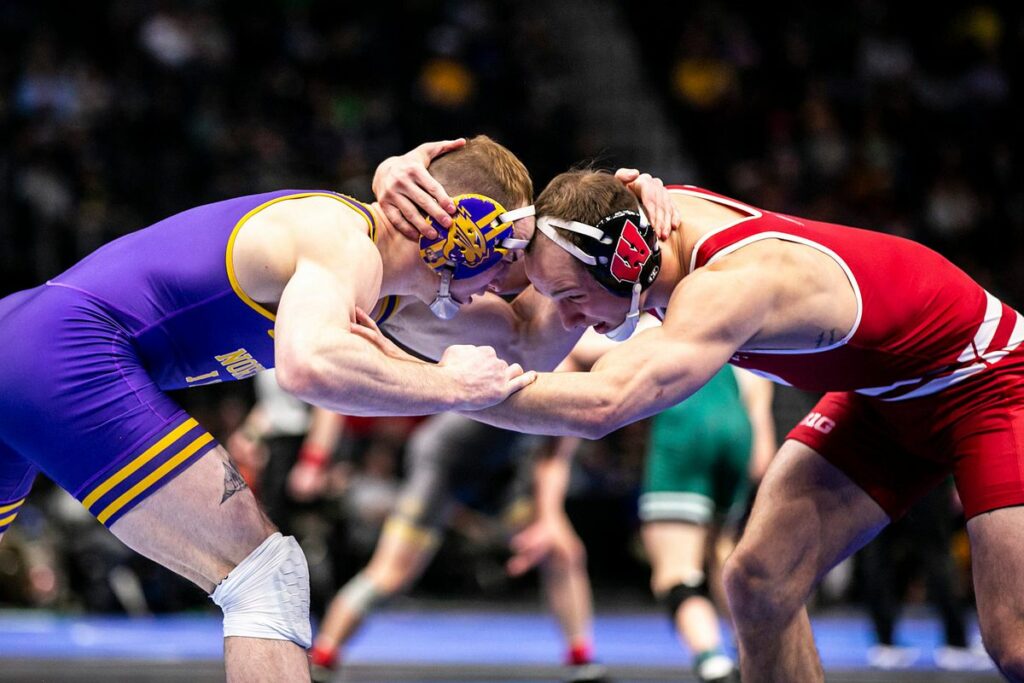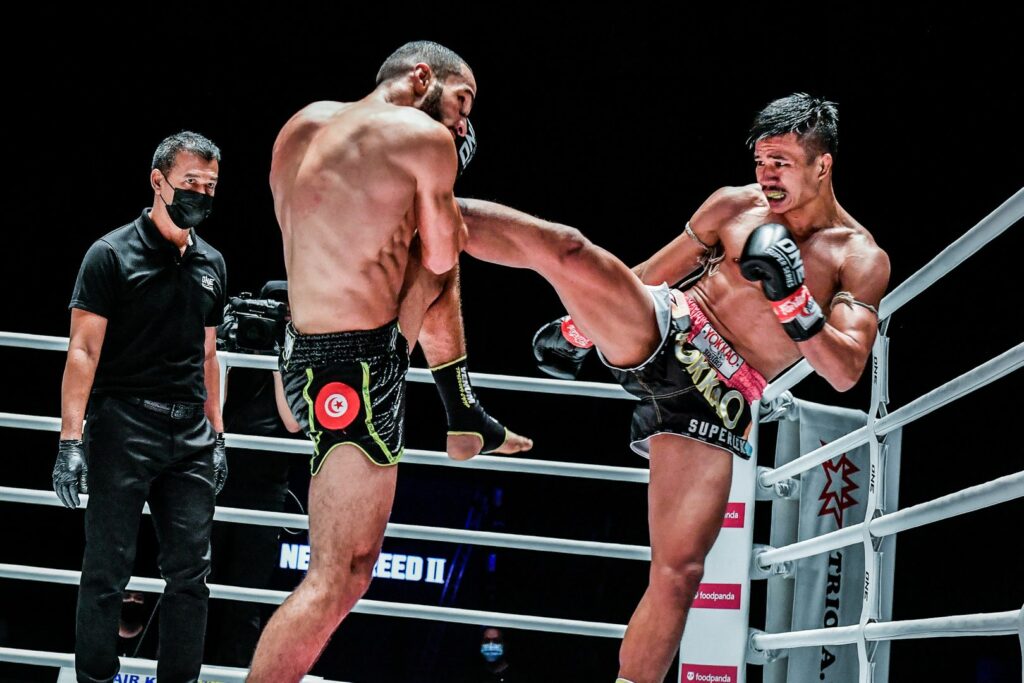
6. Wrestling
Western wrestling, also known as Greco-Roman wrestling and French wrestling, is an ancient sport that may be over 15,000 years old. Cave paintings portray this type of fight, suggesting it may be as old as humanity.
One of the greatest heavyweights of all time, Daniel Cormier, is just one of many prominent and successful UFC fighters who got their start in wrestling.
Although it is its own distinct discipline, wrestling is rooted in the grappling arts and aims to control an opponent once they are on the ground using a variety of techniques (footwork, throws, sweeps, etc.).
The rapidity with which takedowns may be executed is a key factor in wrestling’s effectiveness. Wrestling may lack strikes, but it more than makes up for it with the wide variety of takedowns you can learn at every wrestling club.
Attackers in a self-defense situation, which typically takes place at a bar or disco, will often try to demonstrate their “dominance” by posturing for a fistfight, kicking, or knocking their victim unconscious.
Wrestling becomes relevant at this point. An attempt at a double-leg takedown can be executed in a split second, catching the opponent by surprise. You get to pick what happens next since someone untrained in wrestling or other ground- and grappling-based martial sports has no idea what to do once they’ve fallen to the ground.
As an added bonus, this martial art is easily accessible, with classes offered in most Western cities and across the United States’ educational system as an extracurricular option.
The fact that wrestling takes place on the ground or extremely near to it puts it in a lower tier of martial arts. This may be the best spot to subdue an opponent in a one-on-one combat, but it may not be the best place for self-defense in general.
If your assailant has any allies around, you’re in for a rough time on the ground.
Despite this, wrestling is one of the most efficient martial arts for self-defense training because it boosts one’s self-assurance, physical power, and mental steadiness in addition to teaching one important abilities and tactics. When put together, they allow anybody to compete successfully against an overwhelming number of untrained opponents.

5. Muay Thai (and Kickboxing)
Muay Thai is the next style of martial arts to be discussed. Despite their differences, I place Kickboxing on par with Muay Thai and think it’s just as effective, therefore what I say here applies to both of these fantastic martial arts.
The origins of Muay Thai, also known as Thai kickboxing and Thai boxing, may be traced back hundreds of years, if not more. It’s a kind of close-quarters fighting originally created by the Thai people of Thailand in Southeast Asia.
Kickboxing, or American Kickboxing as it is more often known, is a martial art that combines elements of boxing, karate, and other styles. Its origins may be traced back to the 1970s. But it’s based on Muay Thai, so I’m going to treat it the same and give it a comparable rating for this review.
The name “the art of 8 limbs” is a reference to the fact that in addition to fists and feet/shins, elbows and knees can also be used to deliver blows in a match of Muay Thai. This is why Muay Thai is so effective for self-defense; it is also one of the reasons why it is so adaptable.
Because of its emphasis on bone fitness and intensive training of the most successful striking methods of probably any martial art, Muay Thai is to stand-up combat what Jiu-Jitsu is to grappling. It’s the best and most popular form of stunning art, period.
In addition to the aforementioned advantages, the art’s adaptability greatly enhances its usefulness for self-defense. Muay Thai offers techniques for every range, from long kicks to short elbows to chin shots to jabs in the middle.
The clinch, the most close quarters form of stand-up combat, is also emphasized heavily in Muay Thai. Both fighters have their opponents pinned down by the arms, head, and shoulders in an effort to land some low blows. There are several contenders for the title of finest stand-up clinch art, but Muay Thai stands head and shoulders above the rest.
This adaptability is really useful since it means you can fight in any temper without having to go to the floor. The inclusion of throws allows for a comprehensive education in self-defense.
The availability problem and the steep learning curve prevent it from moving up the list.
While Muay Thai is gaining in popularity daily, it is still not widely practiced. While you can find a boxing or wrestling gym in just about every town or city, Muay Thai facilities are noticeably harder to come by.
The learning curve is also quite steep and challenging. Those who want to follow the traditional Muay Thai road may face a great deal of hardship and conditioning on the way there.








